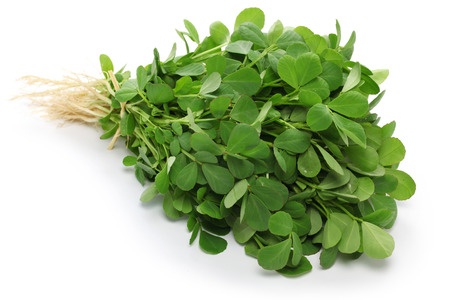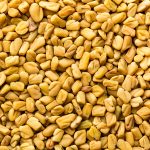
Fenugreek seed is quite pungent but when you come to the leafy greens which are known as methi then don’t worry, you still get the pungency ! A bunch of fresh, freshly chopped fenugreek is a simple requirement for many dishes.
Who hasn’t been treated to methi, that helps you digest your dinner and keep your breath sweet. Chopped fenugreek is the stuff of legend especially in simple side dishes containing yellow lentils with rigid gourds where you dispense with the spices and replace it with this herb. It’s a real treat and needs greater lauding.
For the Indian chef, it’s the stuff too of aloo methi, lamb and mutton curry and parathas.
I’ve often found methi to have a quixotic flavour ( I avoided the use of oxymoronic this time) – more bitter than sweet depending on the time of year. We grow it in the garden for our curry dishes but sadly wave goodbye to it when the frosts first hit it in the UK. However, when the cold weather is due to scythe it down, then it’s best to chop it up and store it frozen.
If you chew methi seeds (fenugreek seeds), that bitterness is even more evident.
Add the leaves to a stringent mutton curry because it adds a certain pungency to that dish.
From the nutritional point of view, it is quite fully packed with protein and vitamins especially vitamin K. Fenugreek is a good source of iron, which is why both seeds and leaves are considered medicinal and a good cure it would appear for anaemia. In many home remedies, my Grandmother would crush and consume fresh leaves of fenugreek grown in the farm’s herb garden to help reduce sugar rushes after one of her filling sweet pies. Medically speaking it appears to control the onrush of insulin into the blood.

My Indian girlfriends eat methi because it helps with tummy troubles especially when they have a bad period. I do not really know why it works like that but I find it calms my stomach down.